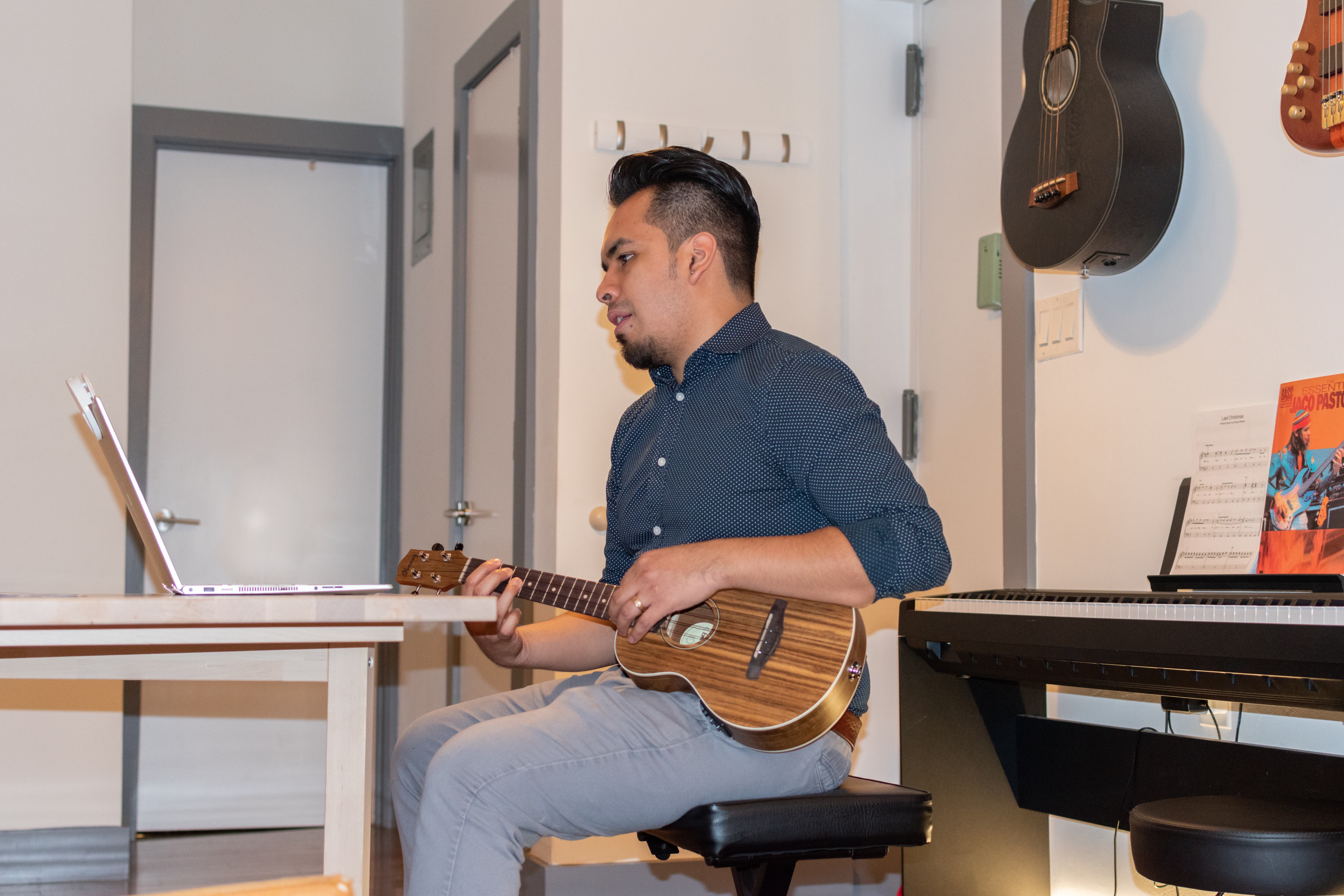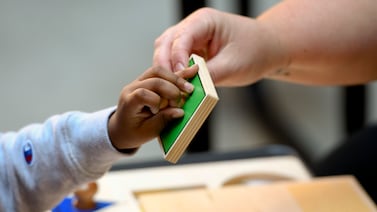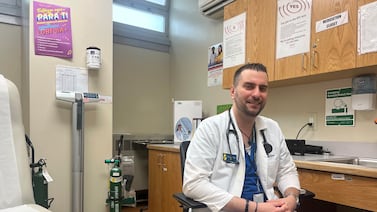School looks a lot different during the pandemic. It feels different, too, and even the youngest children can sense the fear and uncertainty of the moment, said Alfredo Hernandez, a Bronx music teacher.
“You can tell by their eyes,” said Hernandez, who teaches pre-K to fourth grade at P.S. 3 Raul Julia Micro Society. “I wish that school could shield them from the reality of the outside world, but it can’t. And the fatigue is something we battle every day and is visible on their faces.”
But he sees something else on his students’ faces, too: They are engaged, motivated, and challenged.
While teaching remotely in the spring, Hernandez developed a series of lessons on rap music, culminating in students writing and performing their own raps. Back on campus this fall, he transformed his classroom into a space where students can make music even if they can no longer share instruments.
Hernandez embraces the change. He sees it as part of the job, coronavirus or no.
“There’s always something more to learn, a new way to approach a lesson, a new strategy to try,” he said. “This is a profession where your bag of tricks has an expiration date.”
He spoke recently with Chalkbeat.
This interview has been lightly edited for length and clarity.
Was there a moment when you decided to become a teacher?
I had a history teacher in middle school who made learning feel so natural that I wouldn’t even notice I was learning. She created an environment that just felt good for the soul. We could laugh and talk, all while learning. Realizing that was possible inspired me to recreate that feeling for my students.
I don’t often hear teachers being called selfish, but there is a selfish element to the profession. There’s a definite feeling I chase whenever I’m in front of the classroom. There are times when a lesson is going well, where you can see students’ eyes light up because they realize they know the answer. When I see that, I have accomplished creating that feeling I felt all those years ago in history class.
What challenges do you face teaching music this year?
I had to throw out the old playbook and start from scratch.
The task was daunting, but from the beginning, I have been so fortunate to be a part of Education Through Music, a nonprofit organization that places music educators like me in under-resourced New York City schools. This year, the focus is on remote-learning strategies. We’ve had tutorials on video editing, recording, on how to implement a number of different online platforms. They’ve given us packages containing all the equipment needed to be an effective teacher from home.
When we’re on campus, a lot of the lessons and activities I planned before the pandemic began were designed with a large class in mind. And now my biggest class consists of eight students in person. I also sensed a lot of timidness from my in-person classes. This ties directly into class size. Before, a shy student could hide in the crowd during a sing-along. Now, with only seven other students socially distanced around them, they may feel more exposed.
Sharing was also a big part of music: We’d share instruments, we’d link arms. But now that’s not an option. I’ve had to get creative, by transforming the class into a performance. We’ll take a song and sing it a dozen times, each time performing it a different way chosen by the class — maybe a different tempo or maybe we change who leads the song. This show-like atmosphere has helped students feel more comfortable in a smaller class, as well as kept them engaged and excited. They end class feeling like performers rather than students.
What has been your favorite lesson to teach remotely, and what about it works well?
In the spring, I did a unit on rapping. I set it up so that students developed their skills each week. We started by just rhyming words to a beat, and eventually, students wrote and performed their own verses. It was a blast! It worked well as a remote lesson because it offered students a comfortable environment to work from: any shyness went out the window when they realized there was no live audience. It was like singing into the mirror, and that energy really showed throughout the unit.
What’s something happening in the community that affects what goes on inside your class?
The effects of COVID-19 are apparent in my students’ community. From the rise of homelessness to schools closing at a moment’s notice. You can tell that students feel different. You can tell by their eyes. I wish that school could shield them from the reality of the outside world, but it can’t. And the fatigue is something we battle every day and is visible on their faces.
At my school, the faculty realizes its role in the community is crucial during these times. The school has made sure communication is streamlined — something that sounds small but is actually an important foundation for students’ success. With this streamlined communication, my students are always prepared and ready to learn, which is something that I just can’t take for granted these days.
Tell us about your own experience with school and how it affects your work today.
I went to school in Flatbush, Brooklyn, and later attended high school in Manhattan. Both schools served an extreme majority of lower-income students. There was often a general idea that the goal was to “get by” and never to overachieve.
As a student, I didn’t have music until I was in high school. This was because the arts were simply not a priority. With the help of my very dedicated music teacher, I would eventually learn how to play the electric bass.
Realizing a “get by” attitude wasn’t normal really pushed me to raise the expectations for students who come from lower-income families. I want my students to want more, to know what a quality education feels like, and to go on and demand it!
Any New Year’s resolutions you’re willing to share?
I am expecting my first child any day now, so I want to prioritize health this coming year. I don’t want anything to get in the way of me being a great and fun dad. So this coming year I will be stressing the importance of a healthy diet and exercise, as well as practicing ways to maintain good mental health.
What’s the best advice you ever received, and how have you put it into action?
My high school music teacher told me on my graduation day: “Never get complacent when it comes to learning.” He was referring to practicing my electric bass, but now that I’m a teacher it’s advice that means a lot to me now more than ever.
There’s always something more to learn, a new way to approach a lesson, a new strategy to try. This is a profession where your bag of tricks has an expiration date. Seeking out feedback is a cornerstone of my teaching style. As for my students, I encourage them to seek challenges, test their skills, and most importantly keep an open mind.







